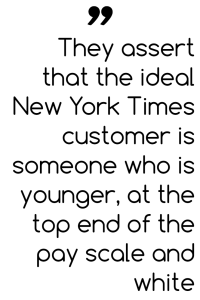
Recently, nearly 100 current and former workers filed suit Walmart, the world’s largest retailer. They are alleging unequal pay and lack of opportunity. Just eight years ago, the Supreme Court blocked Walmart from facing the largest gender discrimination case ever brought against an employer.
Now, though, Walmart again faces discrimination lawsuits. These 100 plaintiffs are alleging denial of equal pay in retail store and certain salaried management positions. The plaintiffs are both current and former employees.
The Plaintiffs
The plaintiffs include Francine Radtka, who worked as a deli manager at Walmart in Manatee County, Florida from 1995 to 2000. She expressed concern when she found that other department managers, all men, were making more money than she was. No one listened; she was soon forced to take on more duties without additional pay. She went from working 50 hours a week to nearly 90, without a raise.
Another plaintiff, Jenny Hicks, worked at a Walmart in the same county as Radtka, from 1997 to 2000. Hicks trained managers who went on to make more than her, all male. She left due to lack of upward mobility, even though those same promotions were made available to those she was training.
In 2011, the U.S. Supreme Court ruled that Walmart, in the case of Walmart Stores v Dukes, was too large to constitute a class action suit against. This prompted the plaintiffs to file individual lawsuits against the retailer.
Lindsey Wagner, an attorney representing the plaintiffs, says that female new hires are often placed in cashier roles or associate roles, while men are placed in departments where fast-track promotion opportunities are often available. She also notes several more lawsuits are likely to be filed over the next few months.
In addition to lawsuits, Walmart employees are pushing for the company to reveal the pay gaps between male and female employees. In 2015, a shareholder resolution was introduced that requires Walmart to disclose disparities in pay between male and female employees. However, despite the introduction in 2015, Walmart has still not disclosed those pay disparities. Gender pay gaps at Walmart still exist, as does upward mobility for male employees over females.





 The suit alleges that the paper has both an ideal customer and an ideal client in mind. They assert that the ideal New York Times customer is someone who is younger, at the top end of the pay scale and white. They further allege that the paper also has an ideal employee in mind and this employee is also young, white and in the top percentiles for income. The lawsuit asserts that Times editors do not wish to hire people who do not fit this image. Plaintiffs suggest that those with families who do not meet these criteria have been denied promotional opportunities. They also assert that any company commitment to hiring people of diverse backgrounds has been actively subverted by those in positions of power here.
The suit alleges that the paper has both an ideal customer and an ideal client in mind. They assert that the ideal New York Times customer is someone who is younger, at the top end of the pay scale and white. They further allege that the paper also has an ideal employee in mind and this employee is also young, white and in the top percentiles for income. The lawsuit asserts that Times editors do not wish to hire people who do not fit this image. Plaintiffs suggest that those with families who do not meet these criteria have been denied promotional opportunities. They also assert that any company commitment to hiring people of diverse backgrounds has been actively subverted by those in positions of power here.